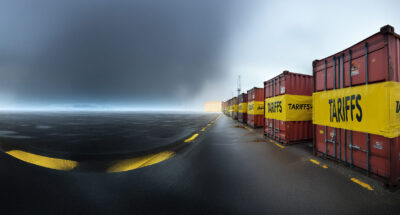In the summer of 2022, waterways in Europe suffered historic droughts. On the Rhine River, which contributes approximately $80bn to the surrounding economies each year, water levels dropped to between 10% and 50% lower than historical averages.
Ships had to lessen their loads to avoid hitting the bottom, and smaller loads sent shipping prices skyrocketing by as much as 30% overnight. Since the situation is not expected to improve, companies are considering how to ensure supply chain resilience. Many are now using digitalization to provide faster, more reliable intelligence to compare alternative means of transport and reroute shipments accordingly.
River transport is considered a lower-cost, more climate-friendly alternative to higher-emitting land-based means of transportation. However, the technology needed for digital agility comes with a carbon cost − digitalization accounts for 4% of global emissions and is expected to surpass emissions from motorized traffic in the coming years.
Climbing emissions exacerbate climate change and the effects increase the frequency of natural disasters − such as the drought conditions on the Rhine − and irregularities feed back into supply chains. Therefore, what looks like a helpful solution for managing immediate disruptions may increase climate-related material risks along the Rhine in the long term.
This is not an isolated example. According to Resilinc’s database of supplier firms, 200 supply chain disruptions per week were recorded in the first quarter of 2022 and this number climbed to 325 in the second quarter.
Companies from all sectors are now working to build supply chain resilience and keep on-time operations running to avoid economic losses. And yet, one frequent shortcoming of these actions is that systemic feedbacks are overlooked. Increasing buffer stocks puts additional strain on natural resources. Keeping production going at all costs exacerbates unsustainable production patterns and social inequalities. Instead of fixing the root cause of the problem, current supply chain resilience efforts can compromise the resilience of other systems, and the long-term consequences of those actions will feed back into the supply chain and increase fragility.








